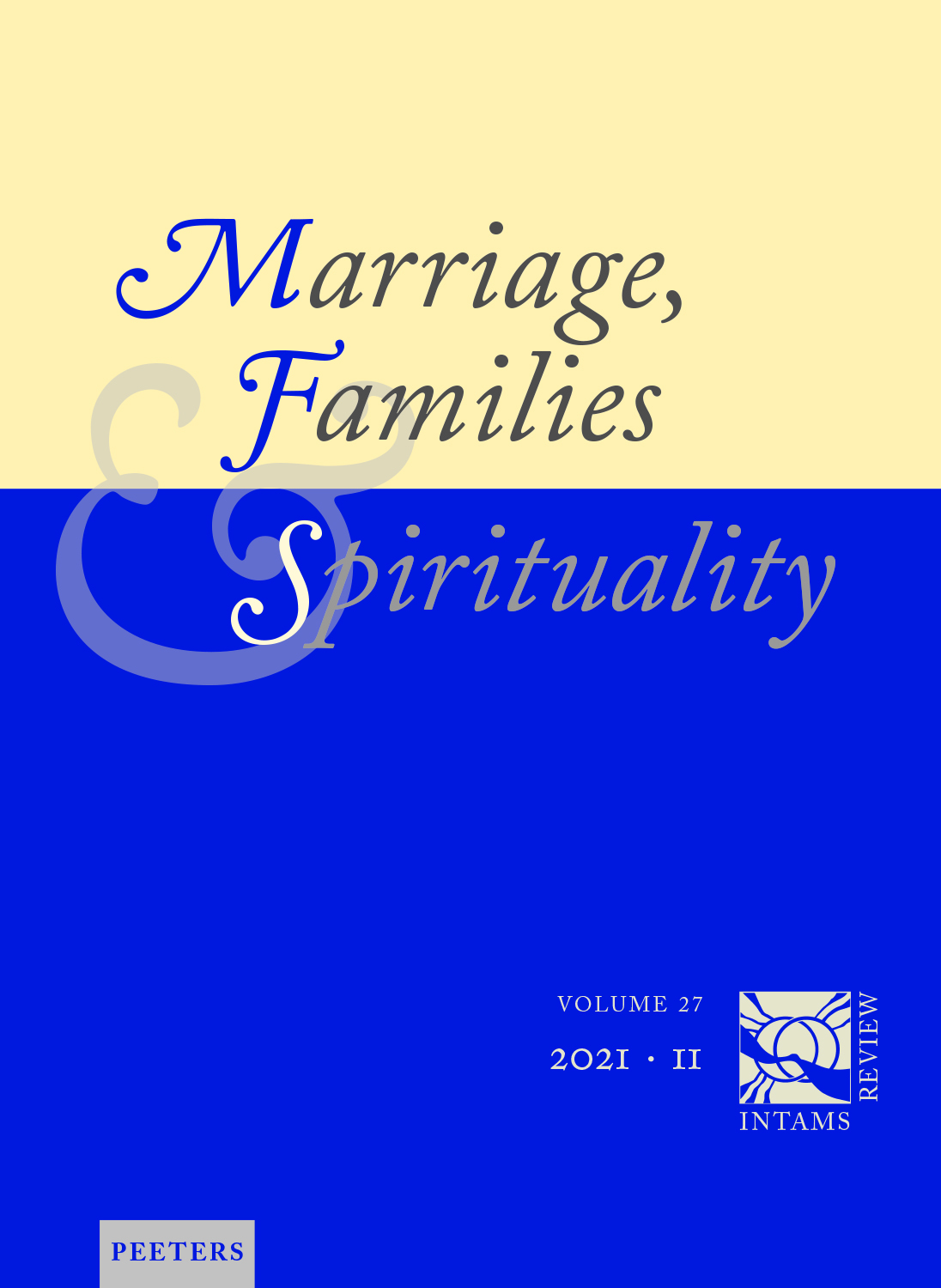 previous article in this issue previous article in this issue | next article in this issue  |

Preview first page |
Document Details : Title: Marriage Subtitle: Relationship and Vocation in Trinitarian Life Author(s): TOOHEY, Denis Journal: Marriage, Families & Spirituality Volume: 18 Issue: 2 Date: 2012 Pages: 166-191 DOI: 10.2143/INT.18.2.2963265 Abstract : The notion of marriage as an image of the Trinity is not new, but it is often expressed only in rather superficial terms. In this article, a revitalised understanding of the doctrine of the Trinity is explored through the works of Walter Kasper and Catherine Mowry LaCugna, with particular emphasis on the economy of salvation and on the re-definition of 'person' (as 'being in relationship'). From this revitalised understanding, twelve attributes or characteristics of trinitarian life are identified. These attributes include love, equality, unity, differentiation, etc. They are then shown to have parallels in the marital relationship and this correlation leads to the conclusion that not only can marriage be an image of the Trinity but also that the perfect communion of Trinity can itself be a model and inspiration for the married couple to follow in their life together. The article then delves more deeply into the concept of the vocation of marriage. While researching the contributions of various authors in this area, it was perceived that each tended to approach the topic from a different perspective. Each of twelve perspectives has been summarised and, for the sake of this article, given a label to indicate the nature of an author’s particular emphasis, such as biblical, sacramental, ethical, psychological, etc. In aggregate, these contributions yield a comprehensive and balanced understanding of marriage as vocation. To develop an appreciation of how marriage as vocation is lived in the life and image of the Trinity, these perspectives of marital vocation have been considered alongside the twelve attributes of trinitarian life identified from the earlier reflections on the doctrine of the Trinity. The ideas and perceptions of these various authors are thus shown to express, both explicitly and implicitly, how the vocation of marriage is God’s call to a woman and a man to participate in trinitarian life by committing themselves to each other for life and using their individual and couple gifts as followers of Christ in the work of salvation. The primary way they do this is by imaging the love of God in their love for each other which in turn spills over into their family and beyond. Far from being a lesser calling, marriage can in fact be the highest human participation in or example of trinitarian life. |
|


